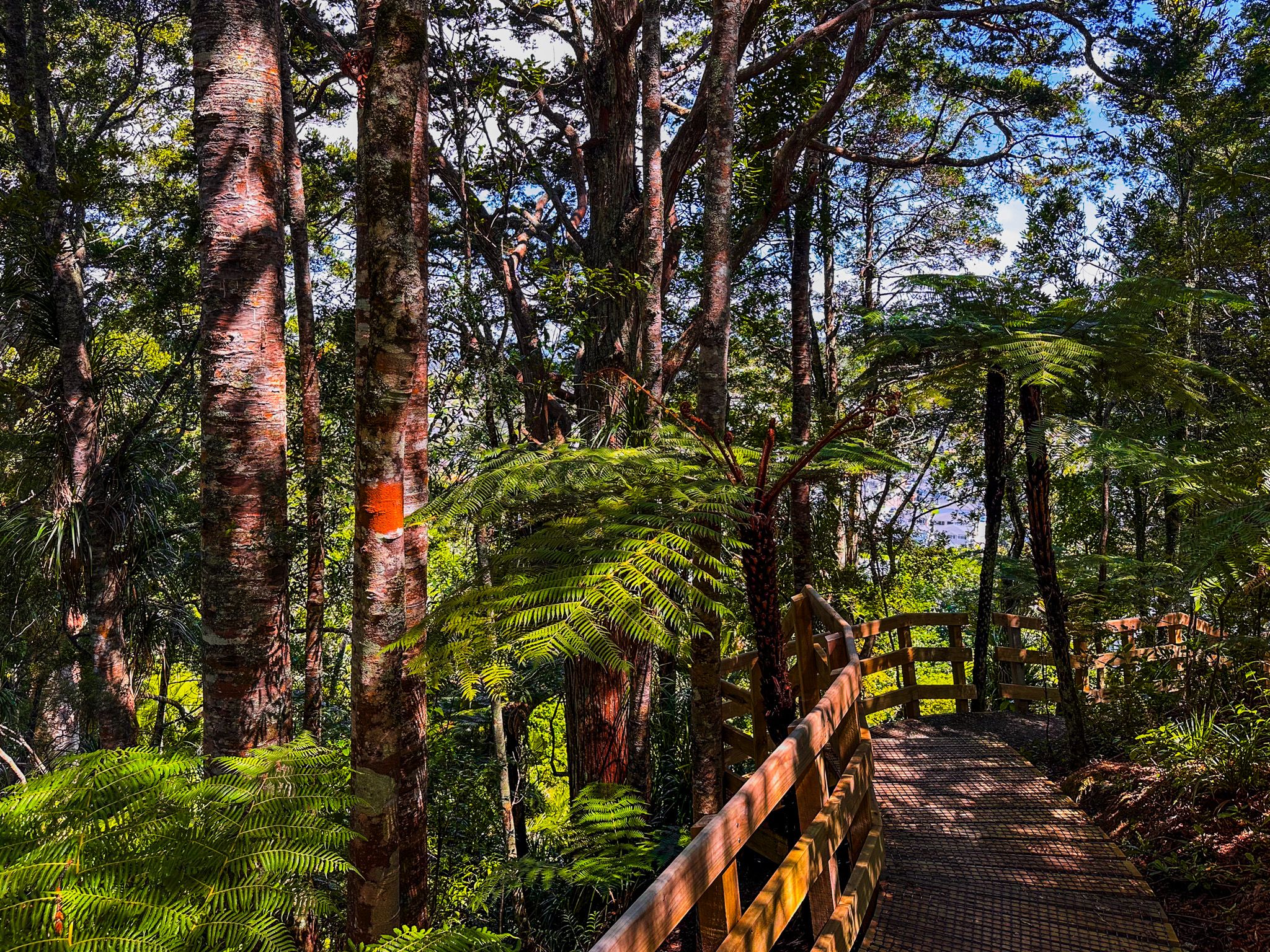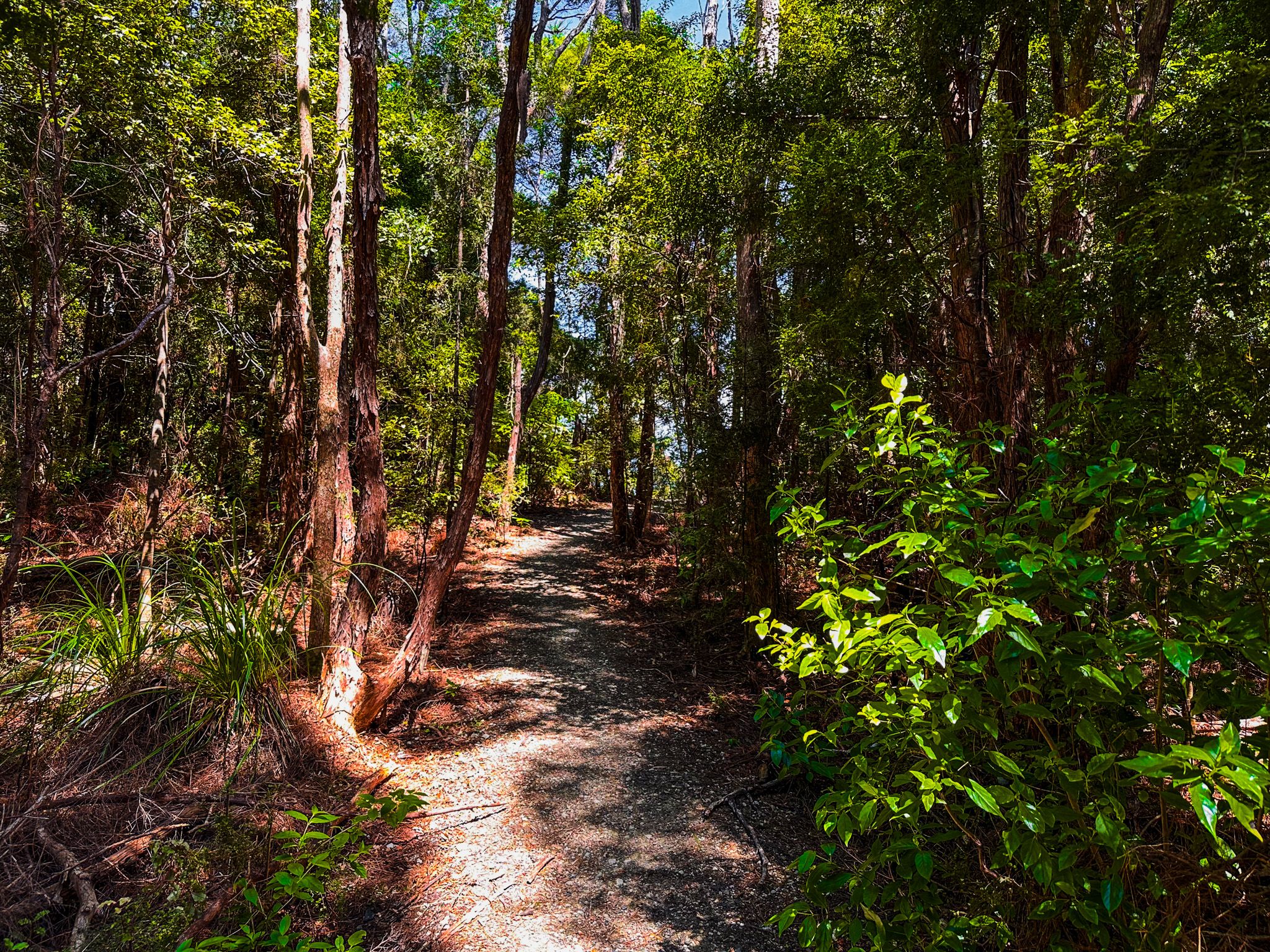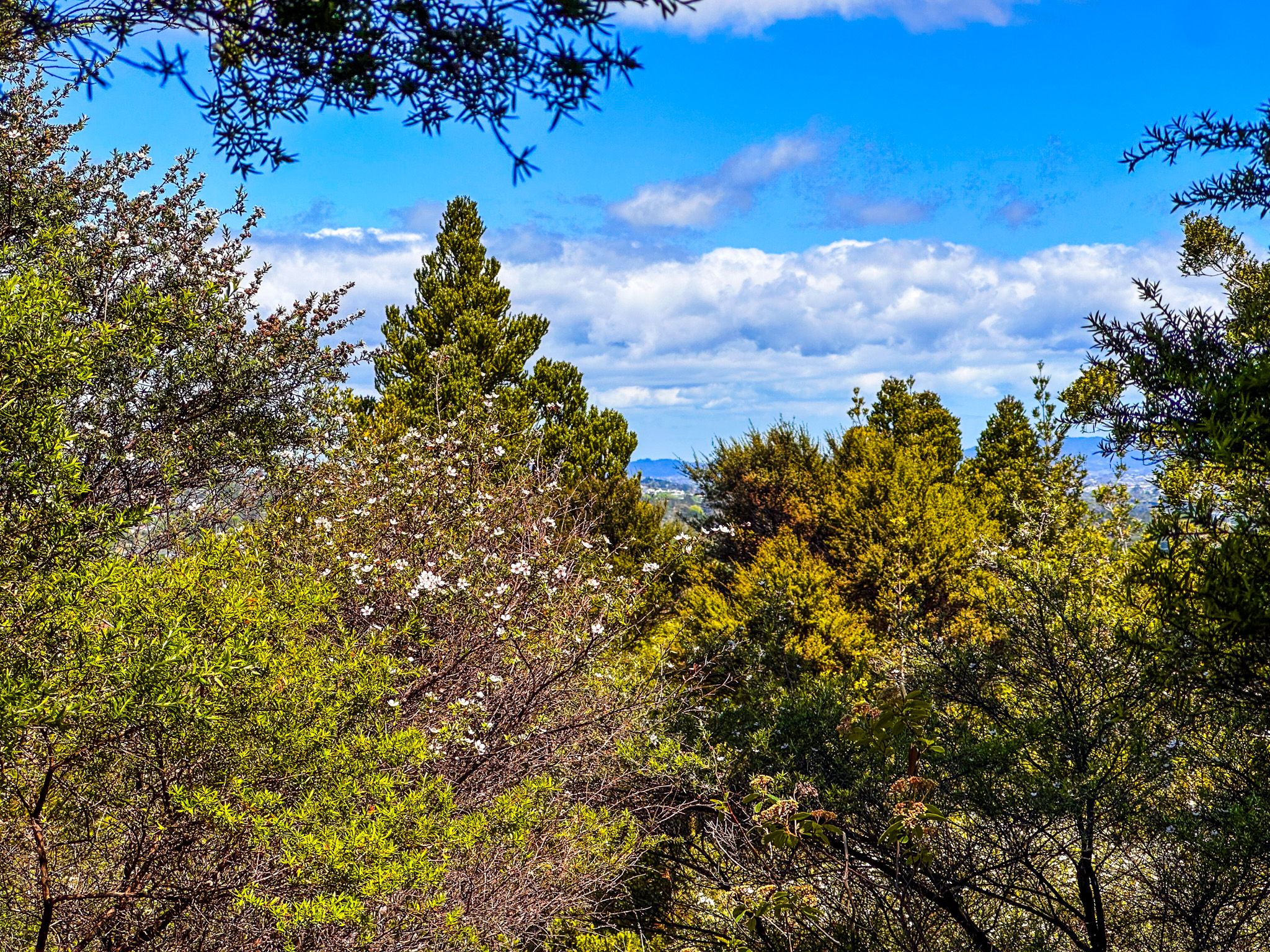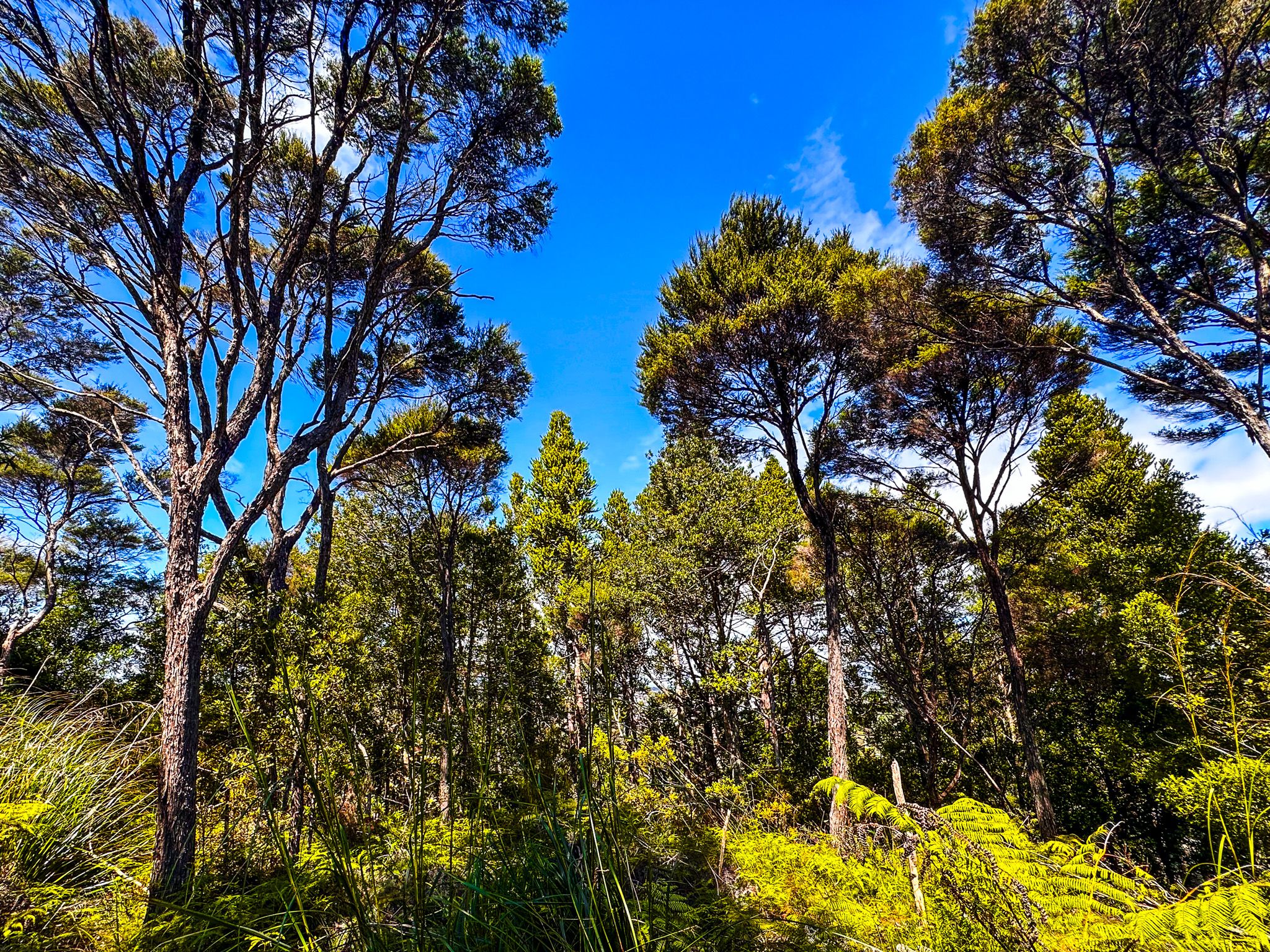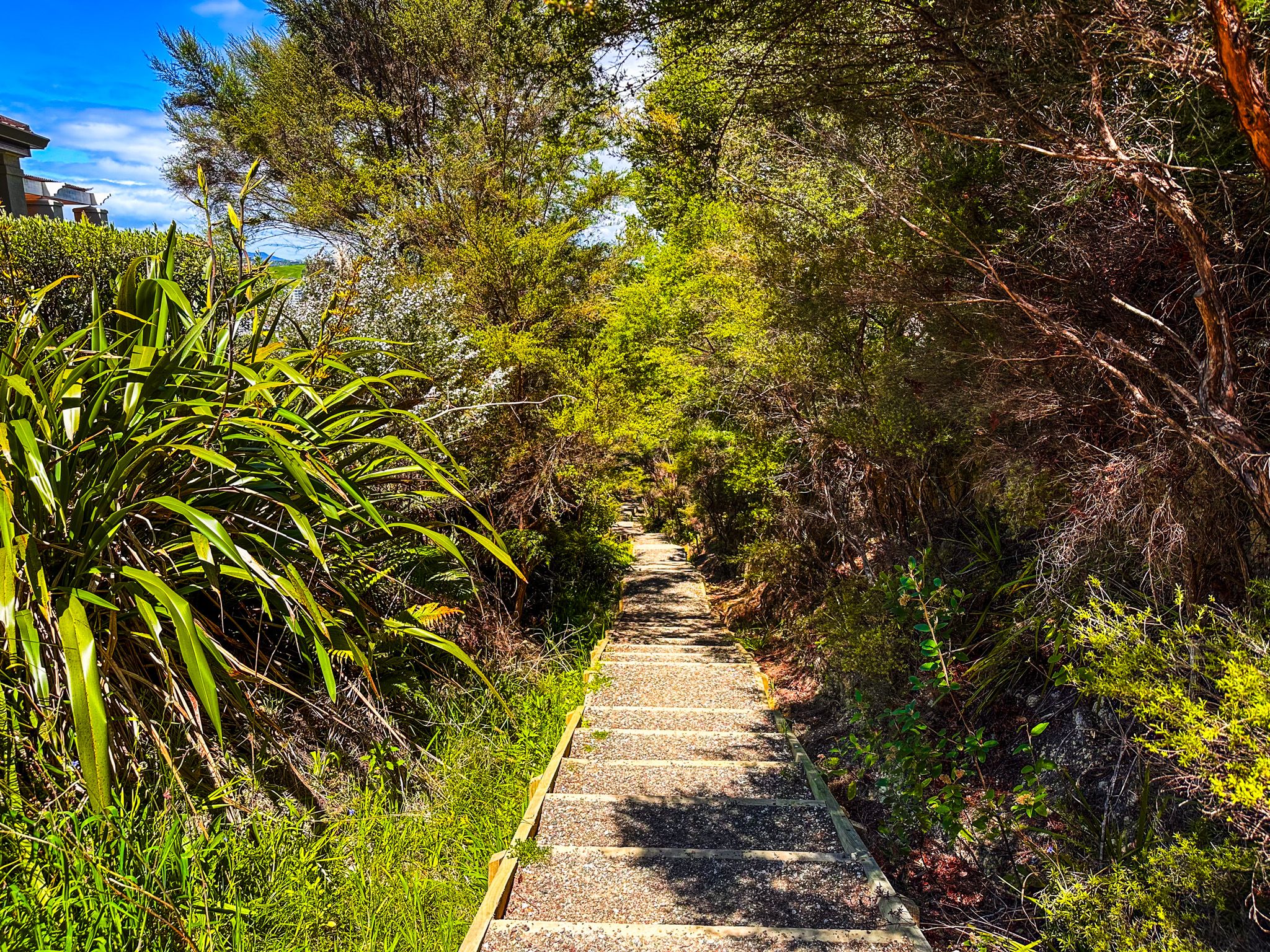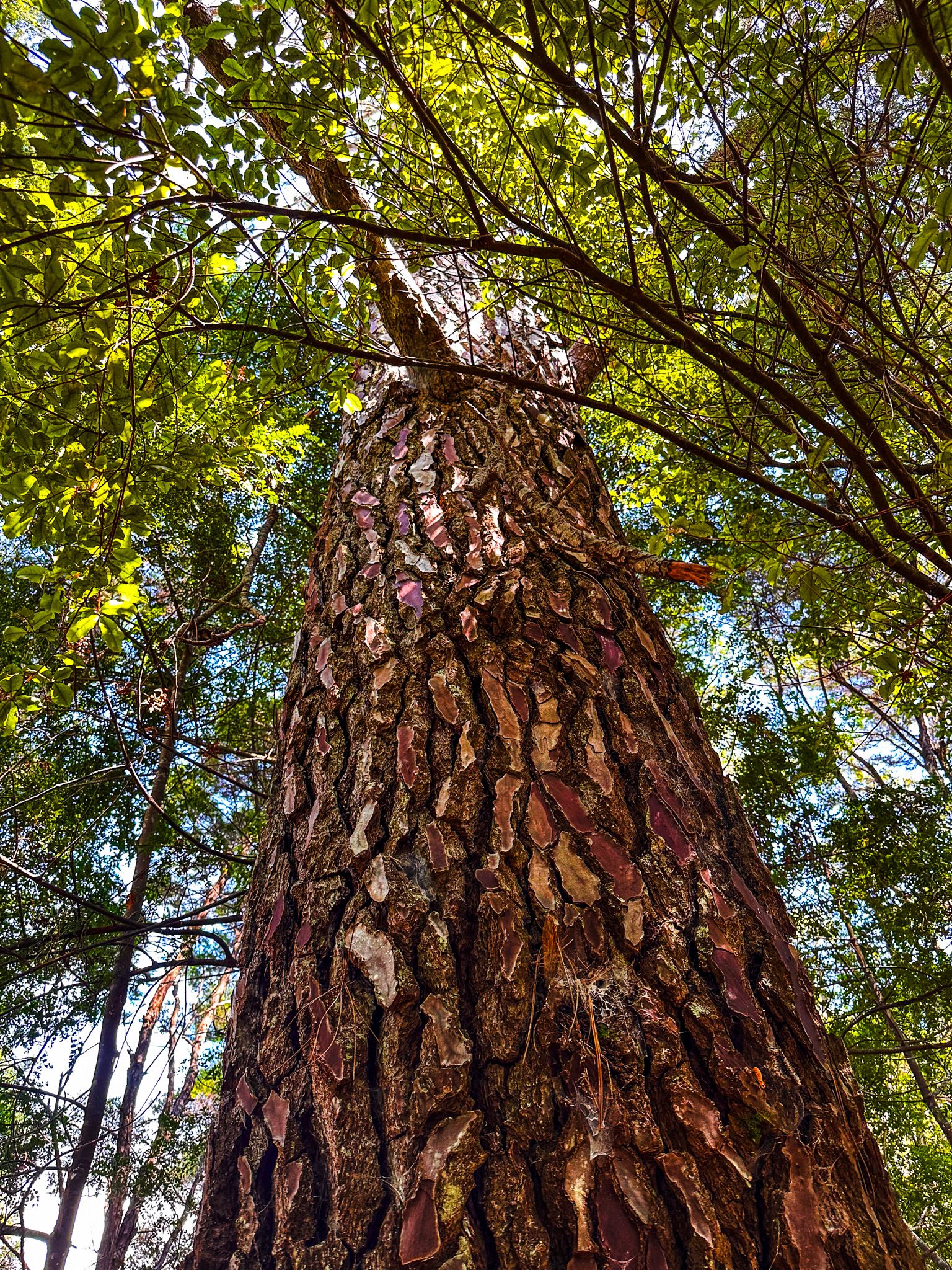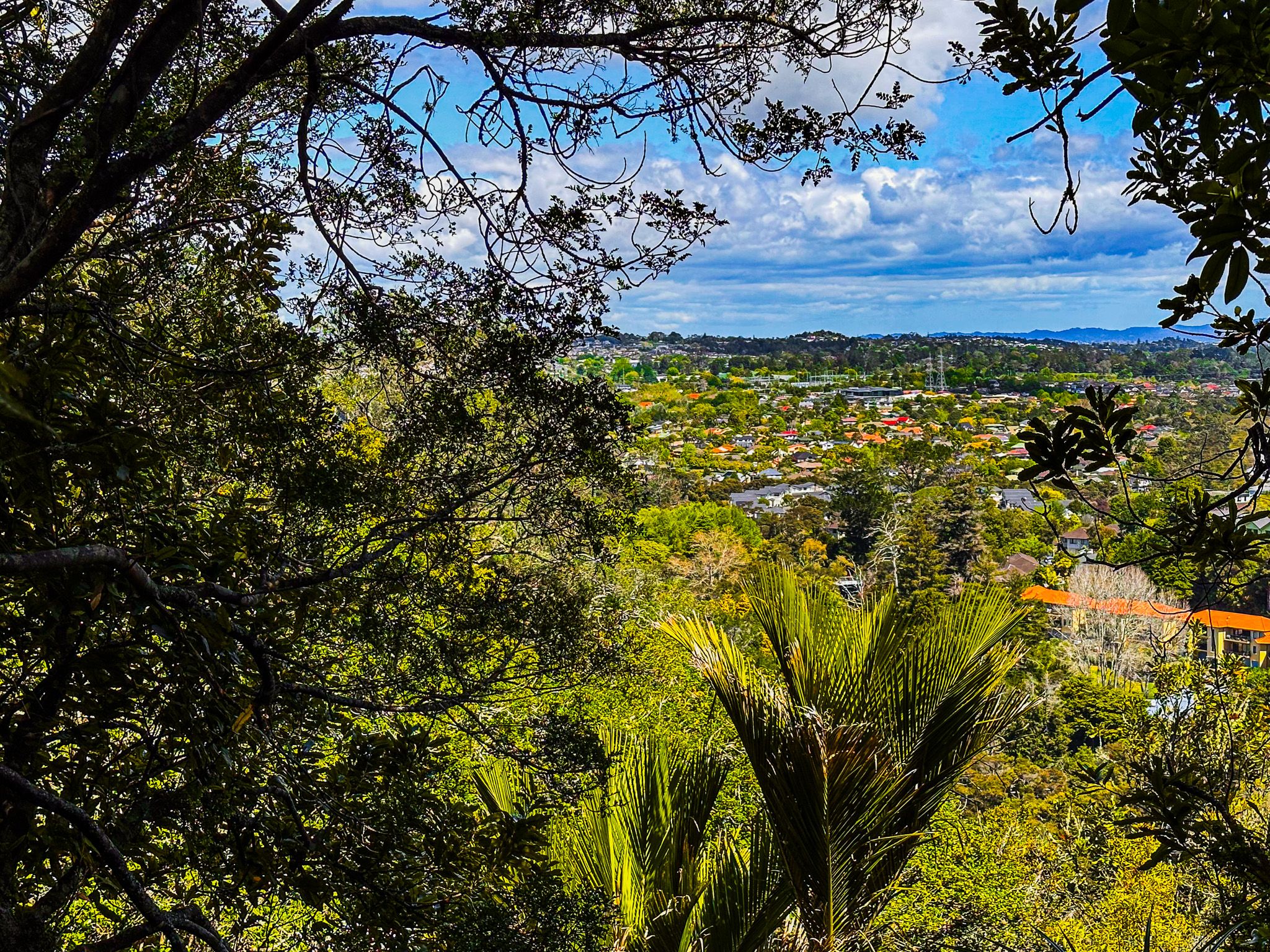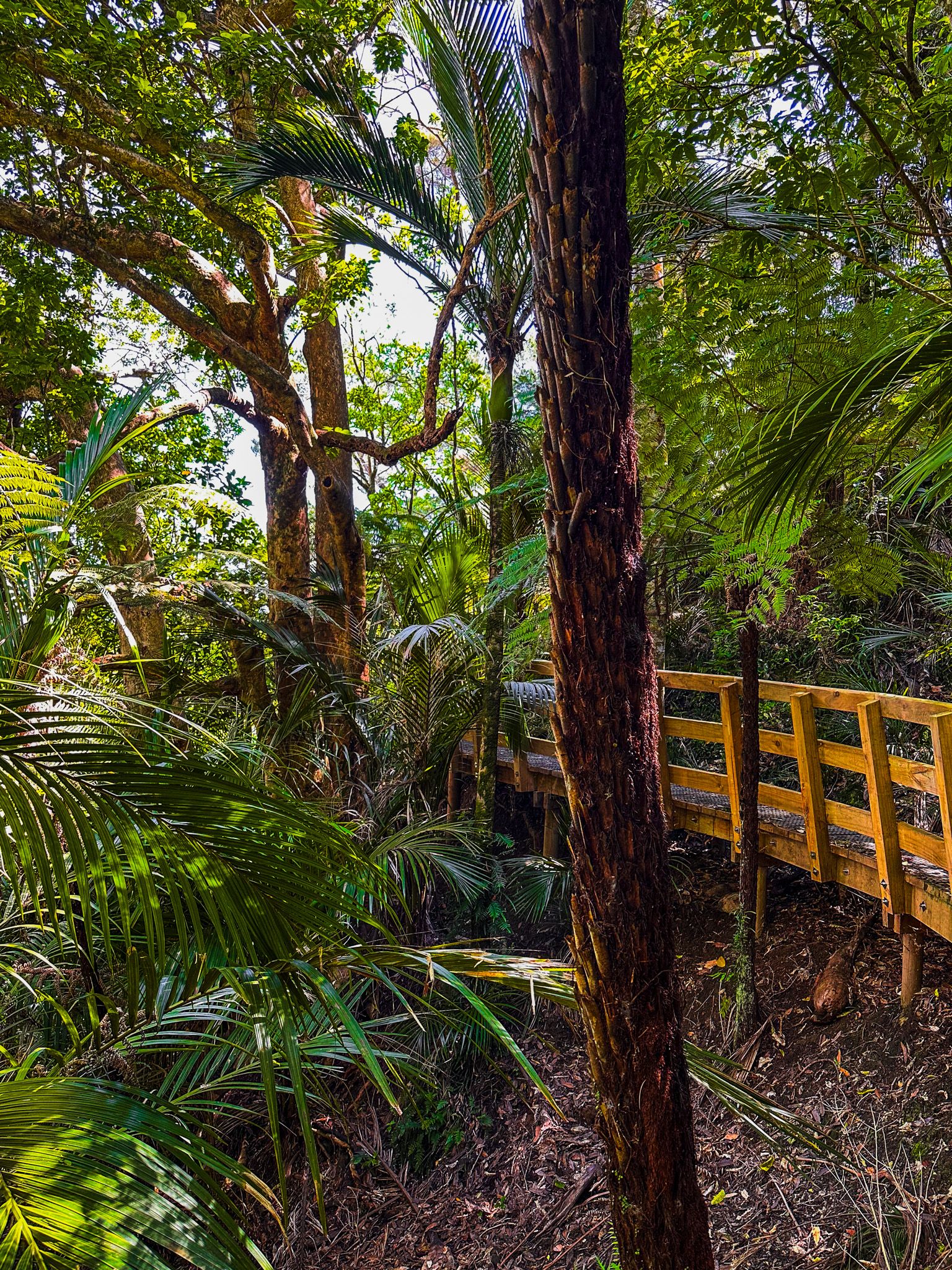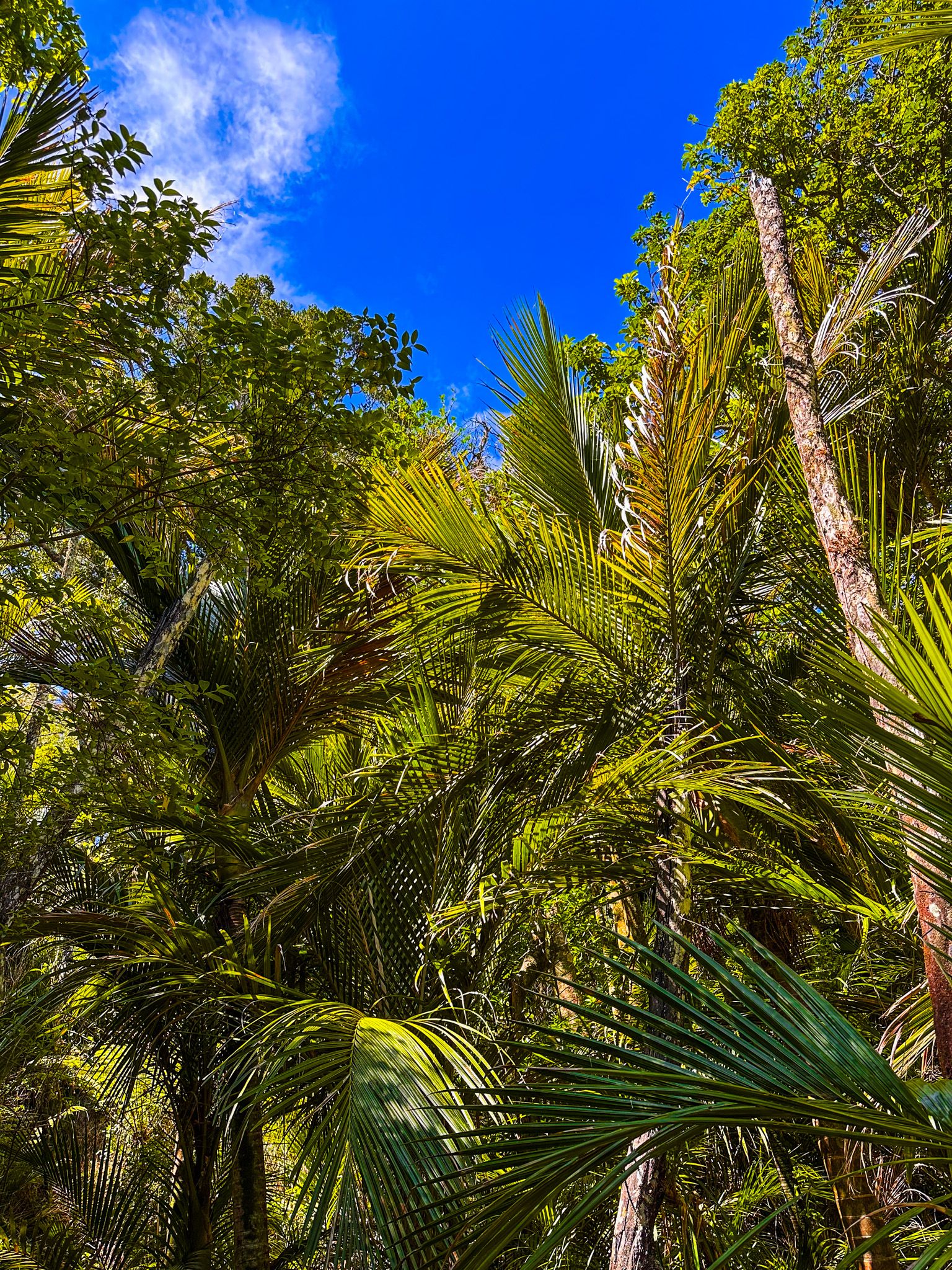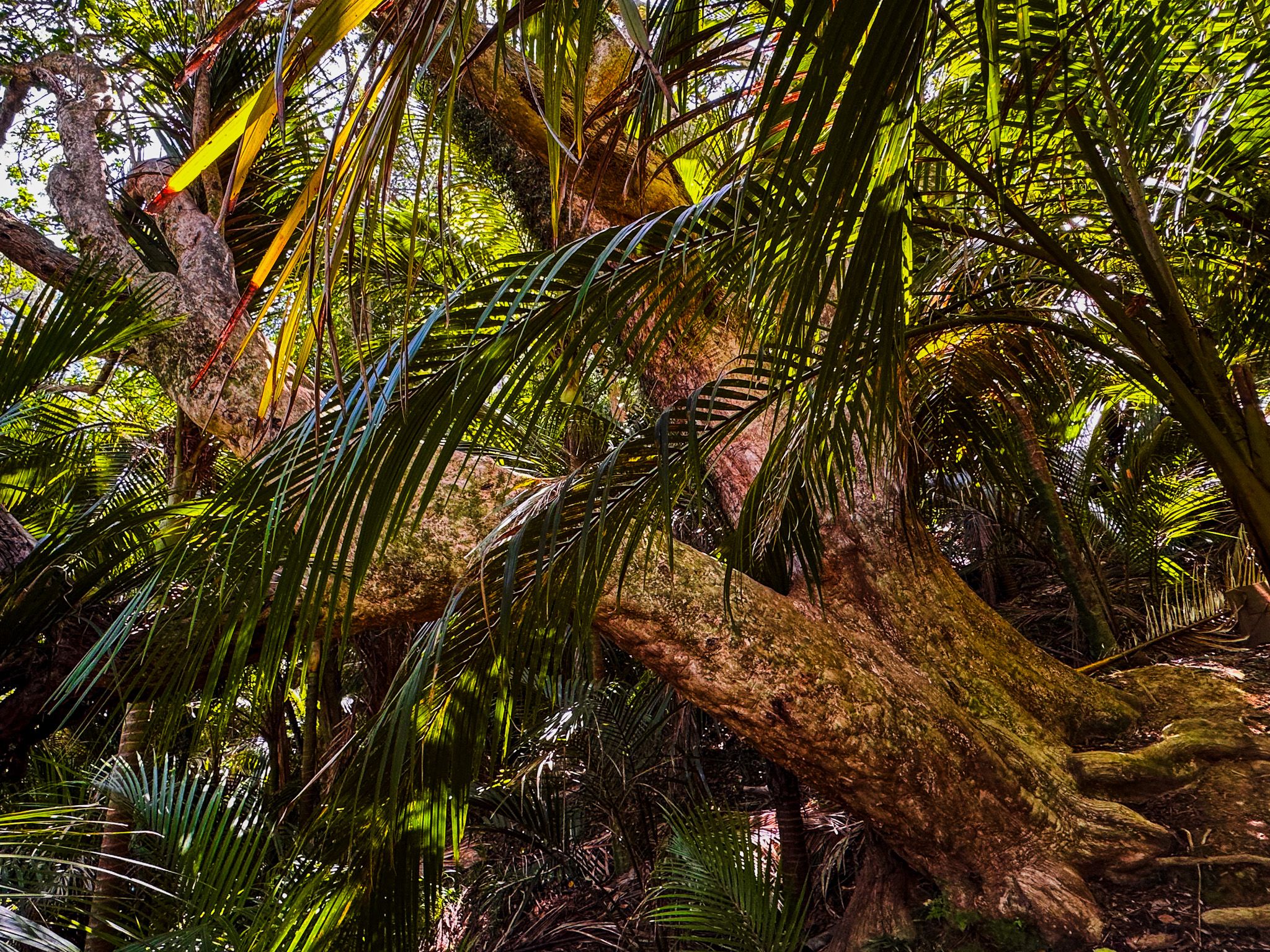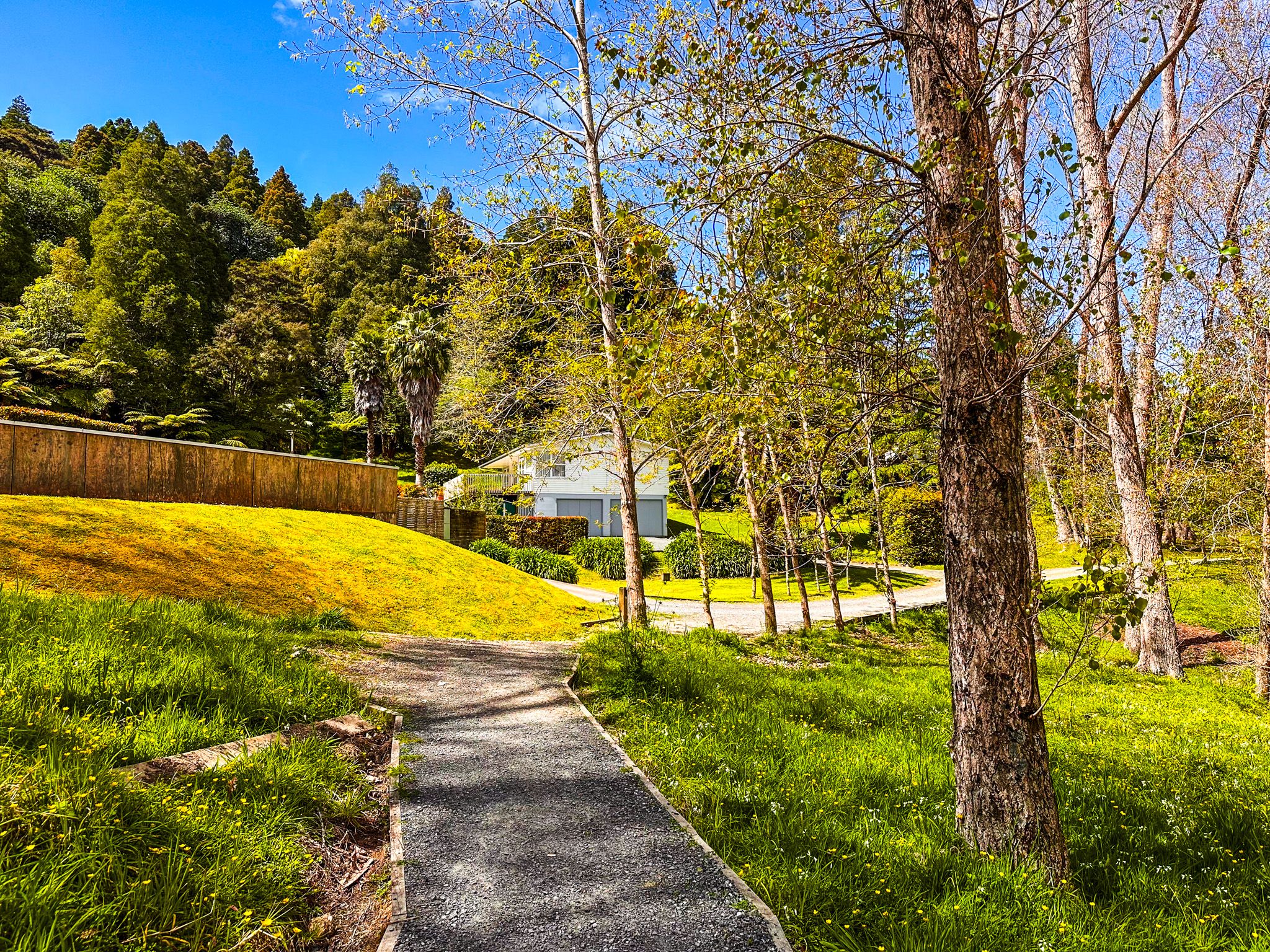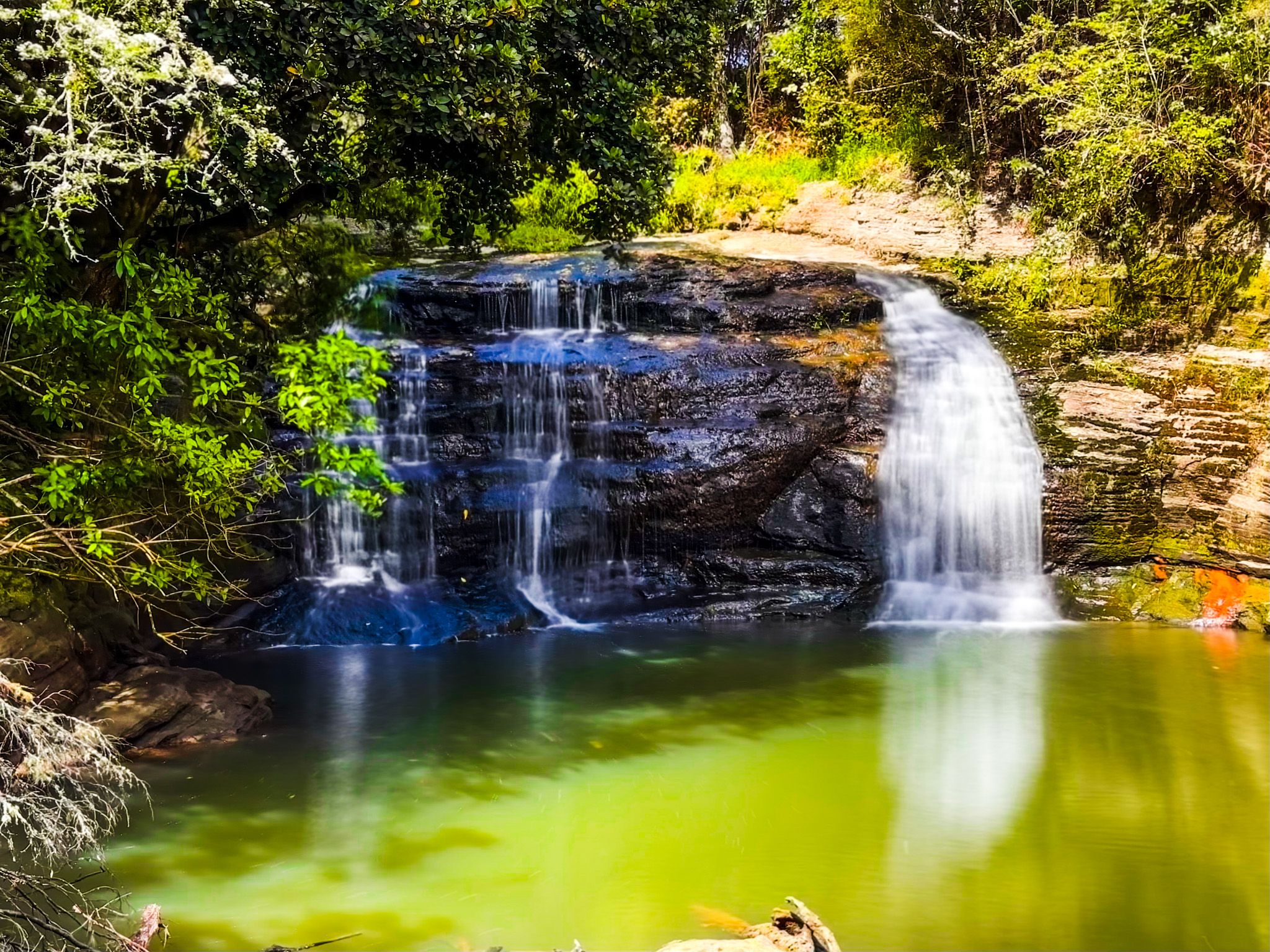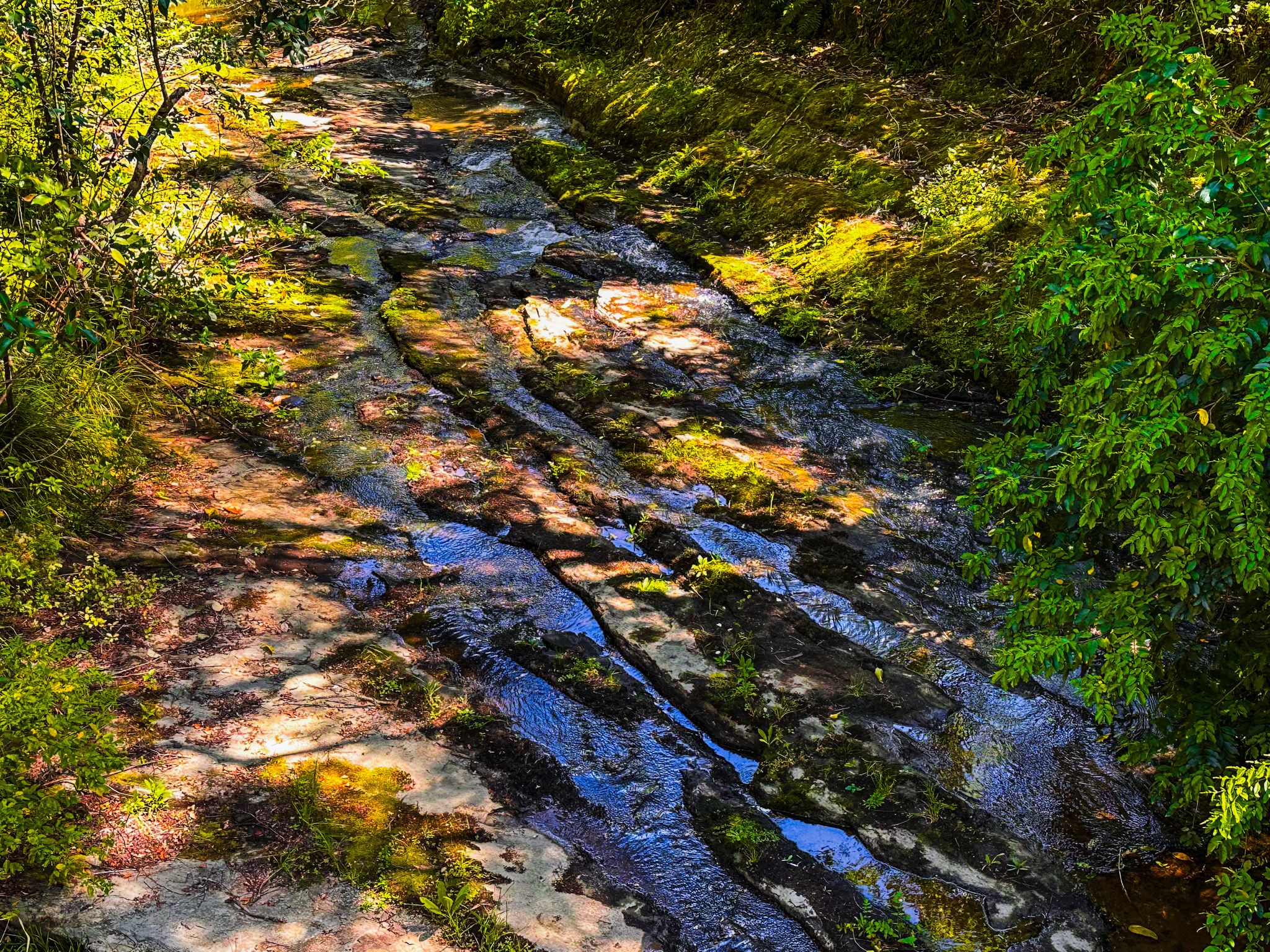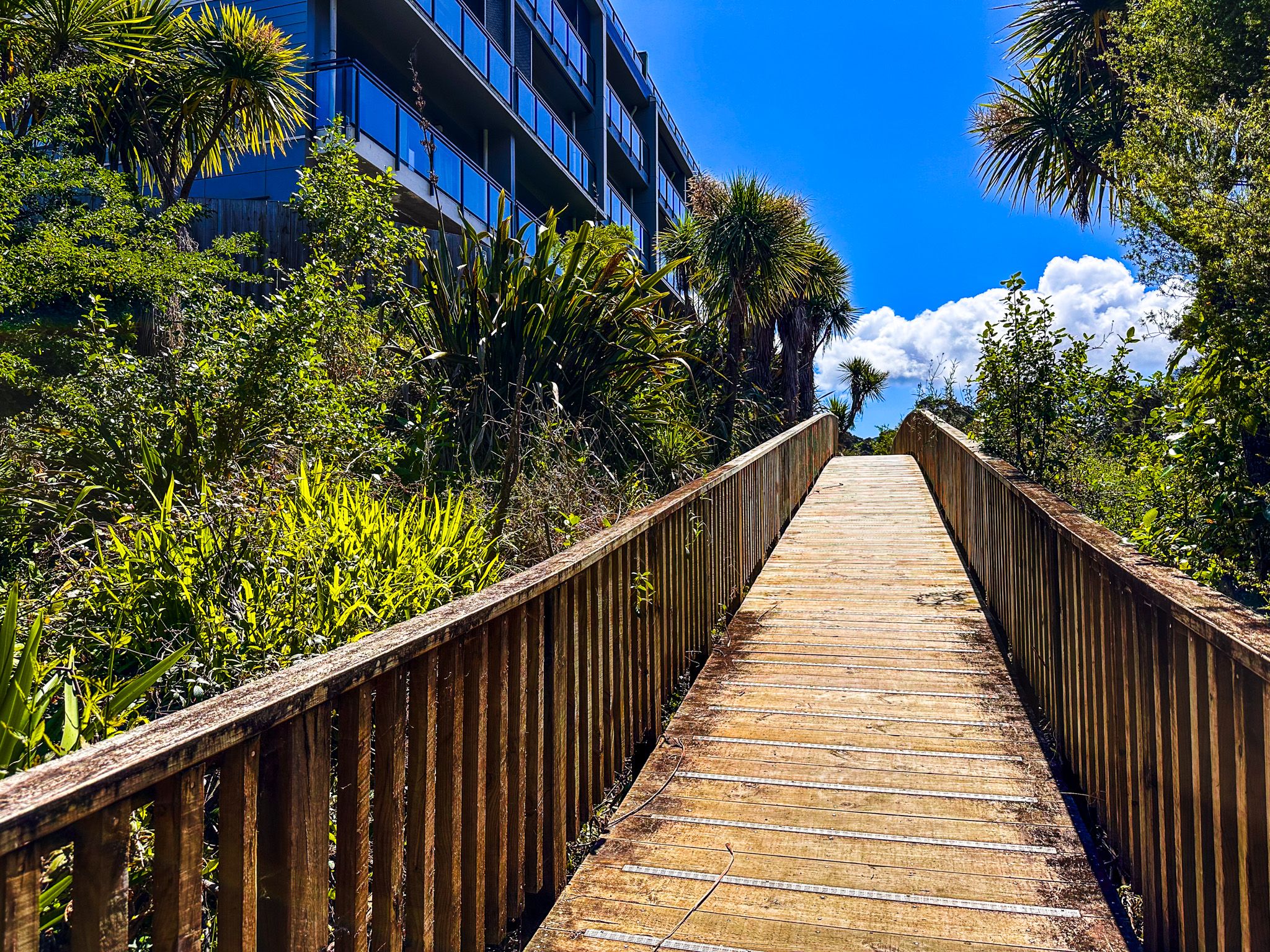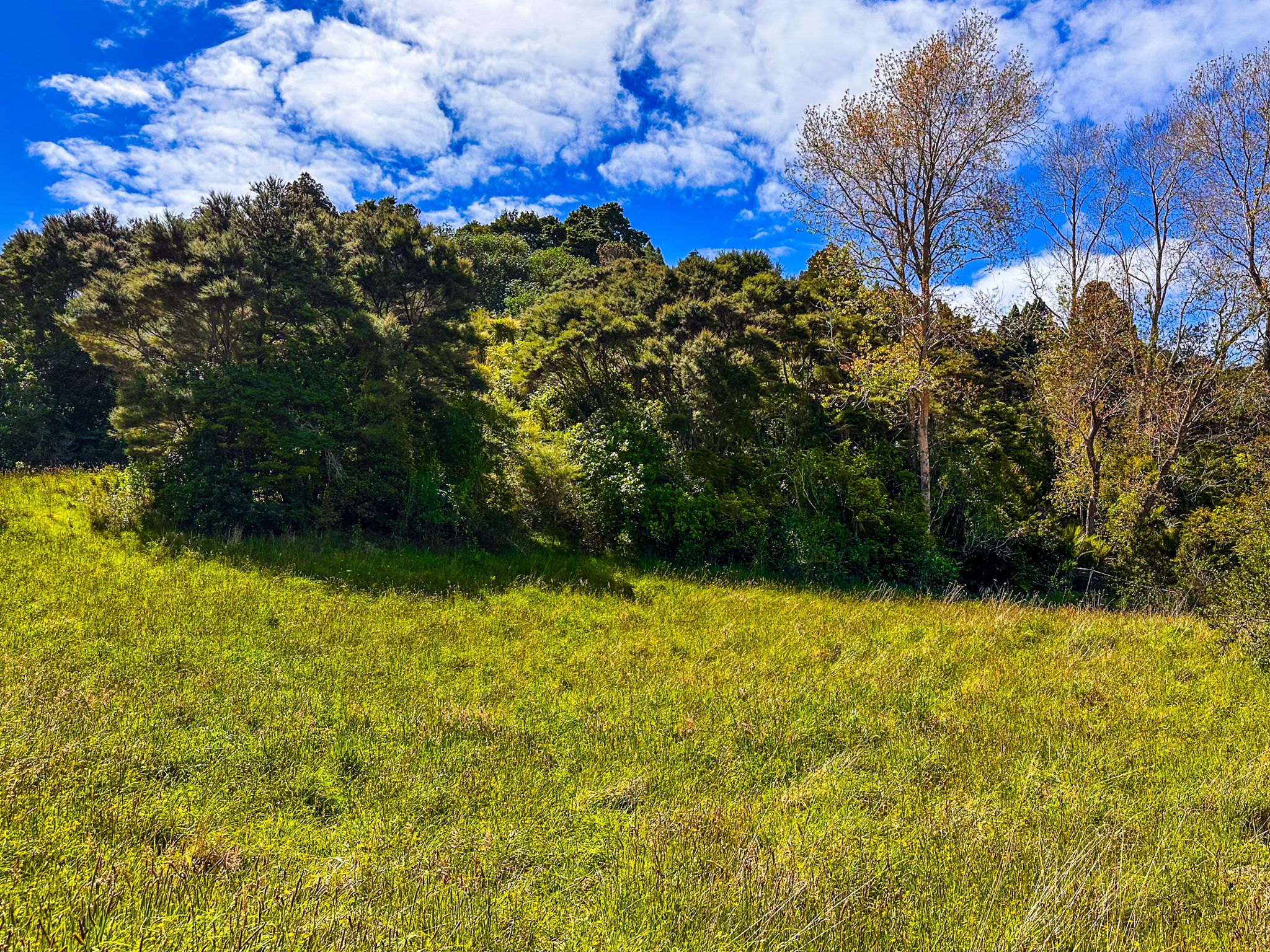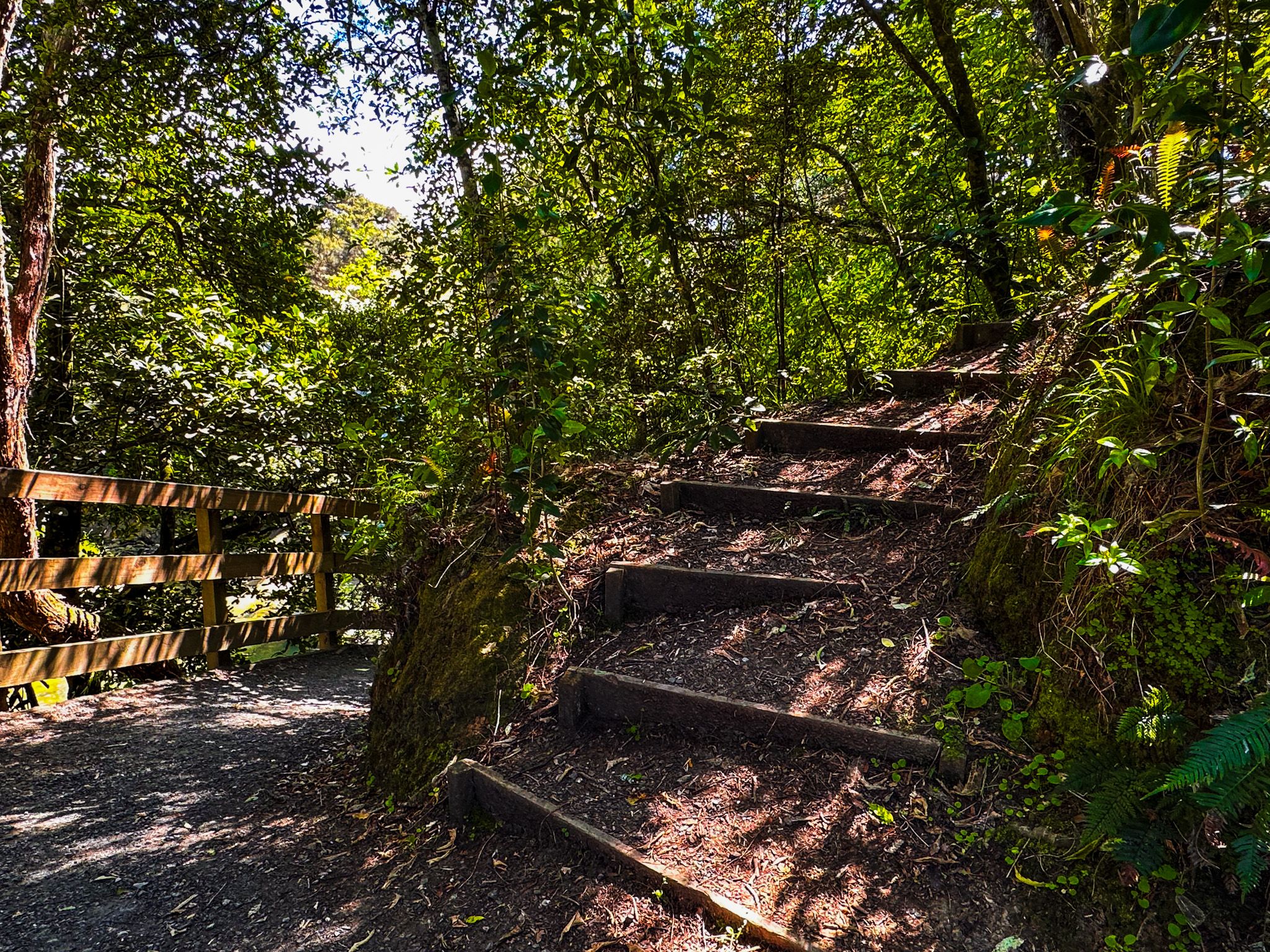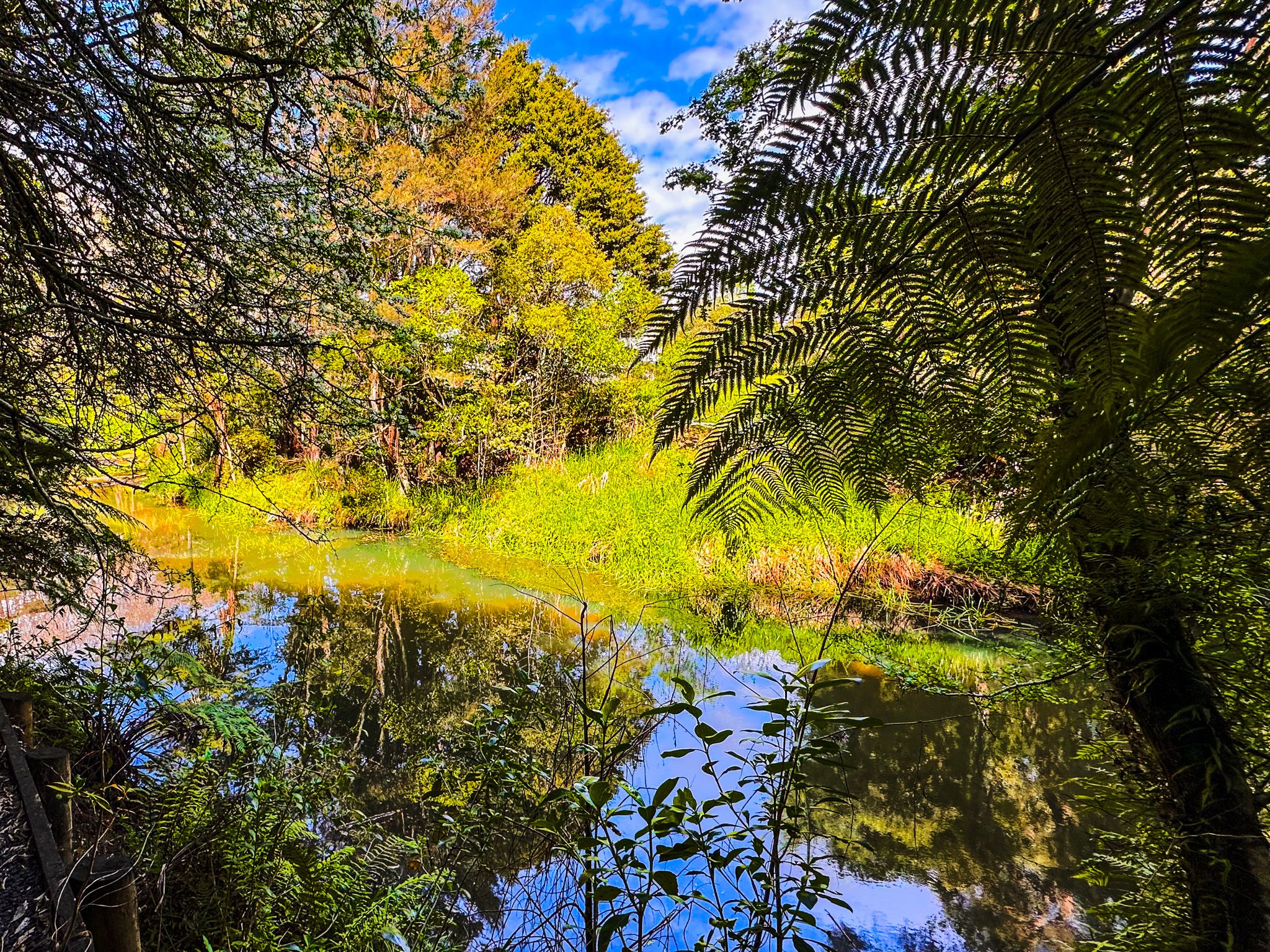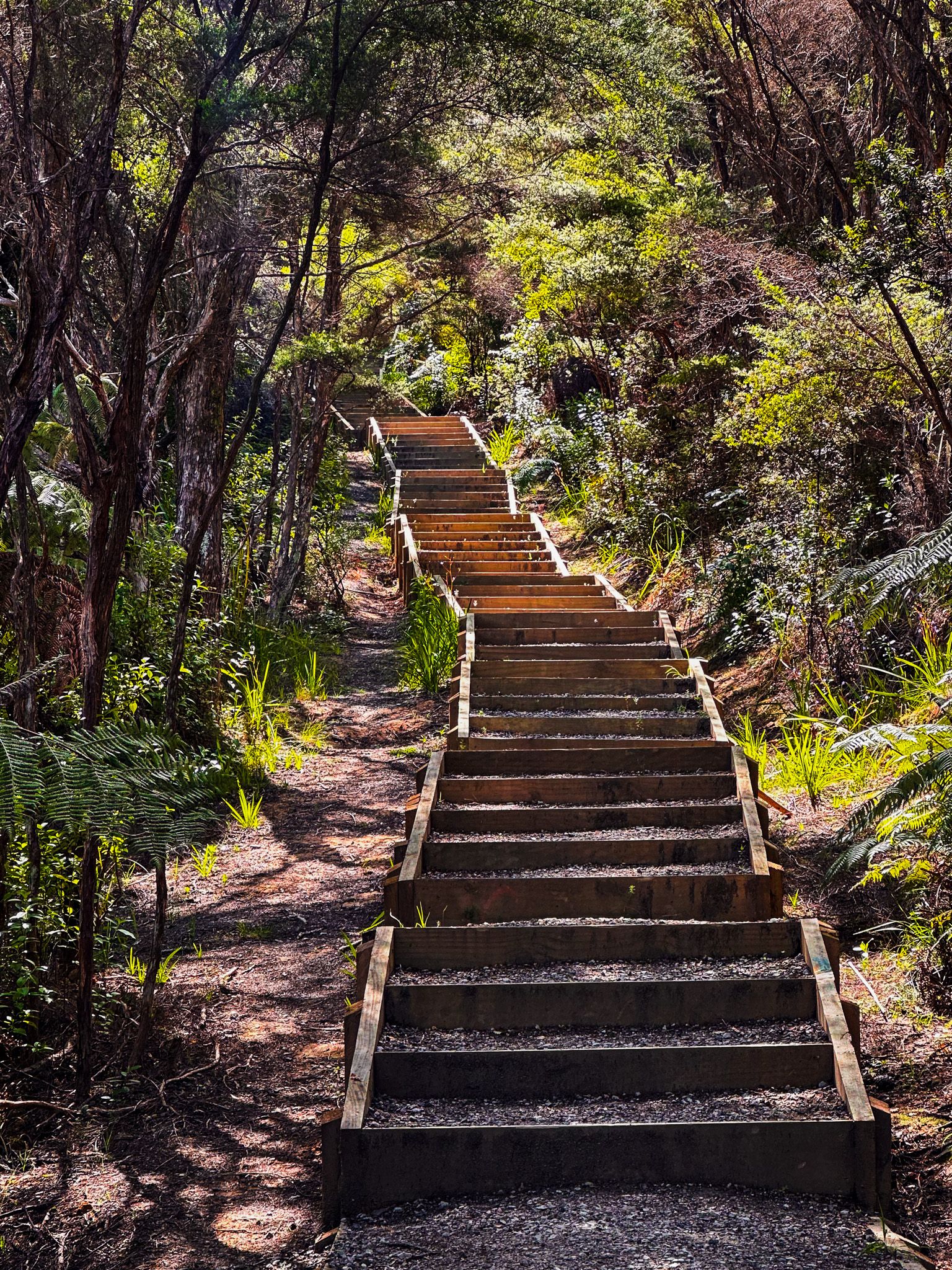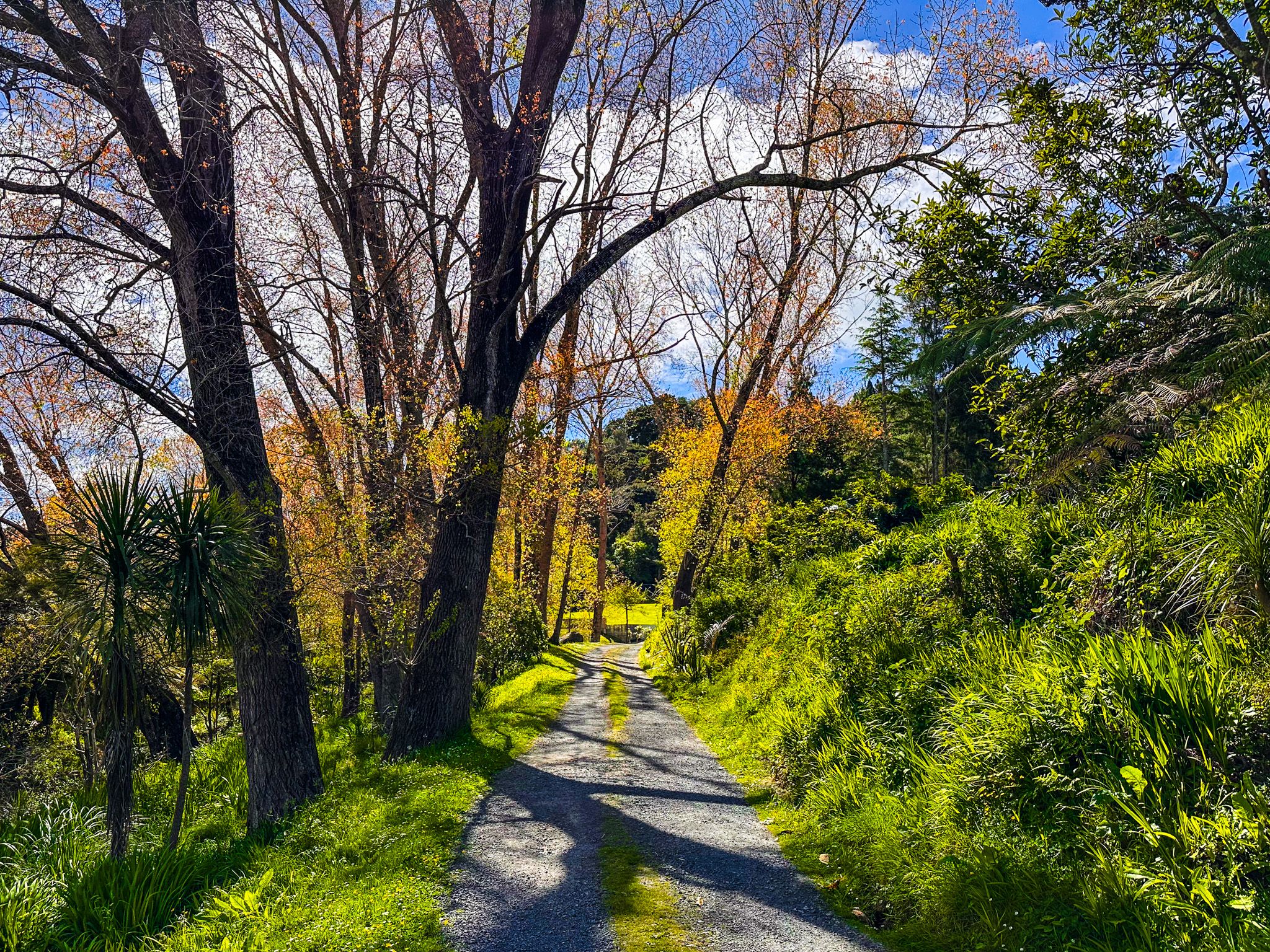Gills Scenic Reserve Main Loop Track is a short but superb forest walk in the suburb of Albany on the North Shore of Auckland. The track runs as a loop from the bottom of a steep hill to the top, with road access and parking at either end. Lucas Stream cuts through the bottom end of the reserve with a short track northwest along the stream to the five-metre Lucas Waterfall.
To get to the bottom access, take Gills Road from Dairy Flat Highway for 200 metres. On your left, you will see a sign and access driveway past several houses over the Lucas Creek bridge. It is best to park before the bridge. The top car park is at the end of Carol Lee Place, accessed from Quail Drive off Gills Road.
The west side of the loop is the best section. It features a sharp zig-zag climb with a boardwalk and steps through a stunning grove of nikau palms and big, sometimes age-deformed, pūriri trees. At various points, there are views of the forest and the city. Watch out for a huge tōtara tree that can be seen on a short side track. The canopy is easy to spot, but seeing its trunk's scale requires more effort.
The east side of the track passes mostly through regrowth native forest and includes some exotic pines around the top. However, there are some kauri trees, and a lengthy series of steps makes the slope more gradual.
The walk to the waterfall is an easy extension. The track is obvious and follows the stream for about 100 metres, rising above the falls and then dropping to the pool at the base. Although no signs warn against swimming in the pool, it looked somewhat murky when we visited. You can continue to walk past the waterfall to a bluff above where two steams meet, with a picnic table. Continuing takes you to a bridge over the second stream, around a large apartment block to Dairy Flat Highway. Watch for the side track that takes you up to a large meadow, mostly obscured from the main track.
For Māori, Lucas Creek was part of a pathway used to move waka between the Waitematā Harbour and the upper Hauraki Gulf via the Okura River and Long Bay. Gills Reserve is believed to have been the site of Te Rere, a Māori kaianga (village). The government acquired the land as part of the large-scale Mahurangi purchase of 1841. The creek provided early settlers access to cut the area's kauri and then to kauri gum, with a wharf built at the head of the creek. Daniel Clucas is believed to have briefly operated a flax mill around 1845, leading to the name Lucas Creek. Although Clucas left within a year, a town developed, which was also called Lucas Creek. Fruit growing developed around the town, including the lower part of the reserve. Curiously, Lucas Creek became known as a somewhat shady place by the 1880s, with illegal alcohol production along the stream. So, in 1890, the residents changed the name to Albany.
The lower part of the reserve continued to be used as an orchard until the 1960s, while the steepness and bluffs of the south face largely protected the old forest. In 1964, much of the land around Albany was taken for public housing but left unused. In 1992, it was donated to the North Shore City Council and combined with other land acquired from the Hull family estate at the upper end of the reserve. These acquisitions formed the reserve. The Gill family had promoted the idea of a reserve for many years, and the name was to honour their efforts.
